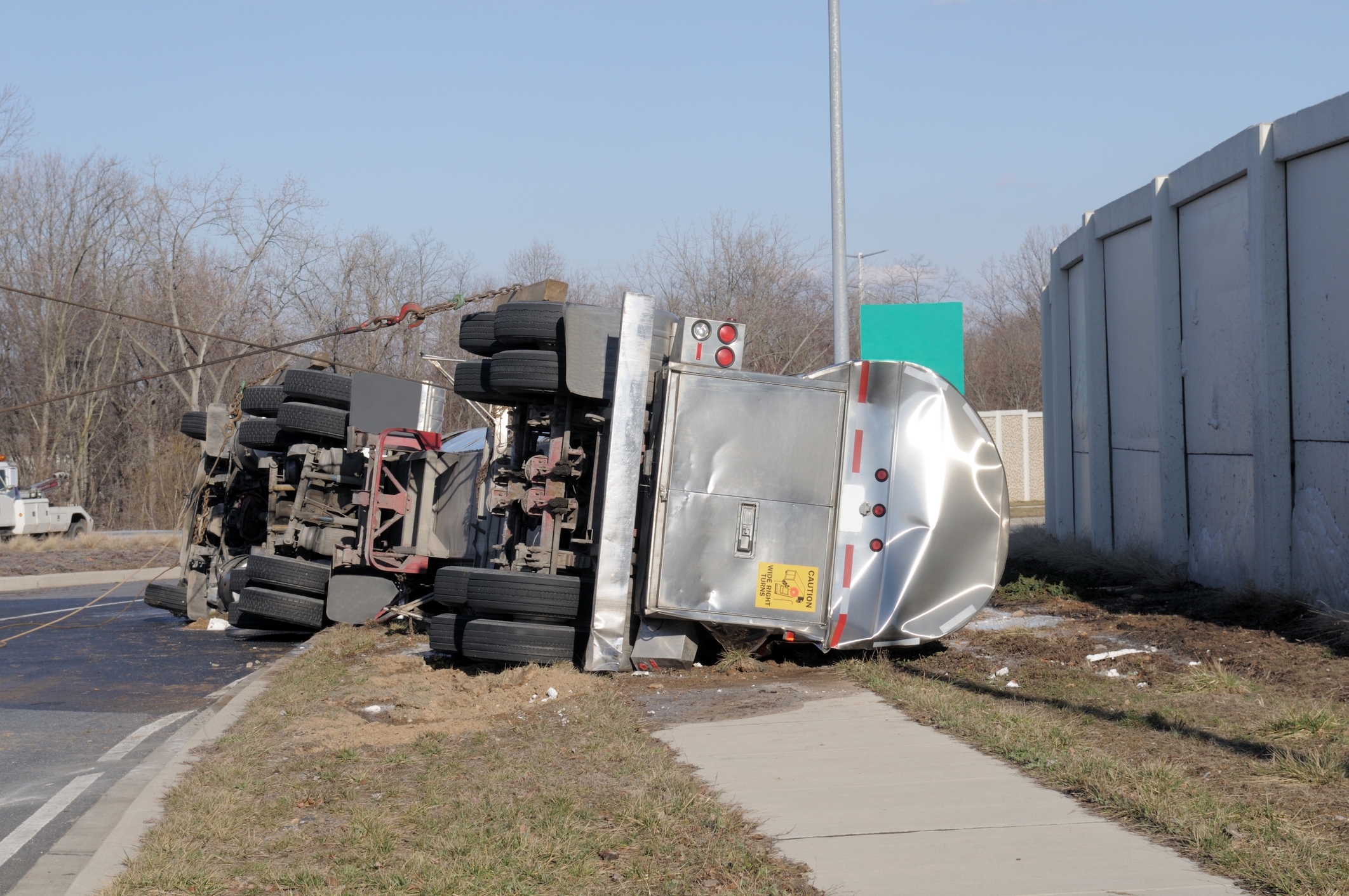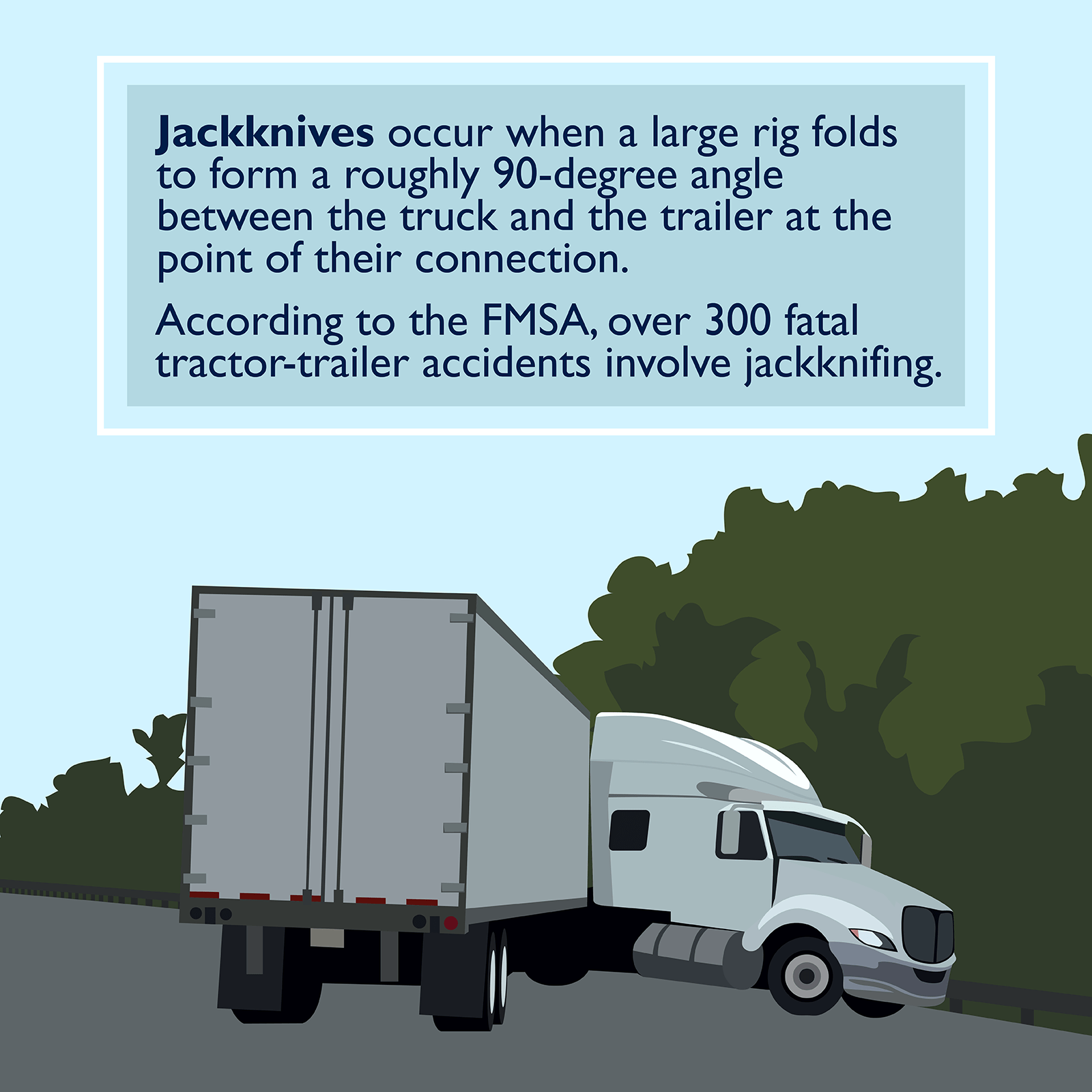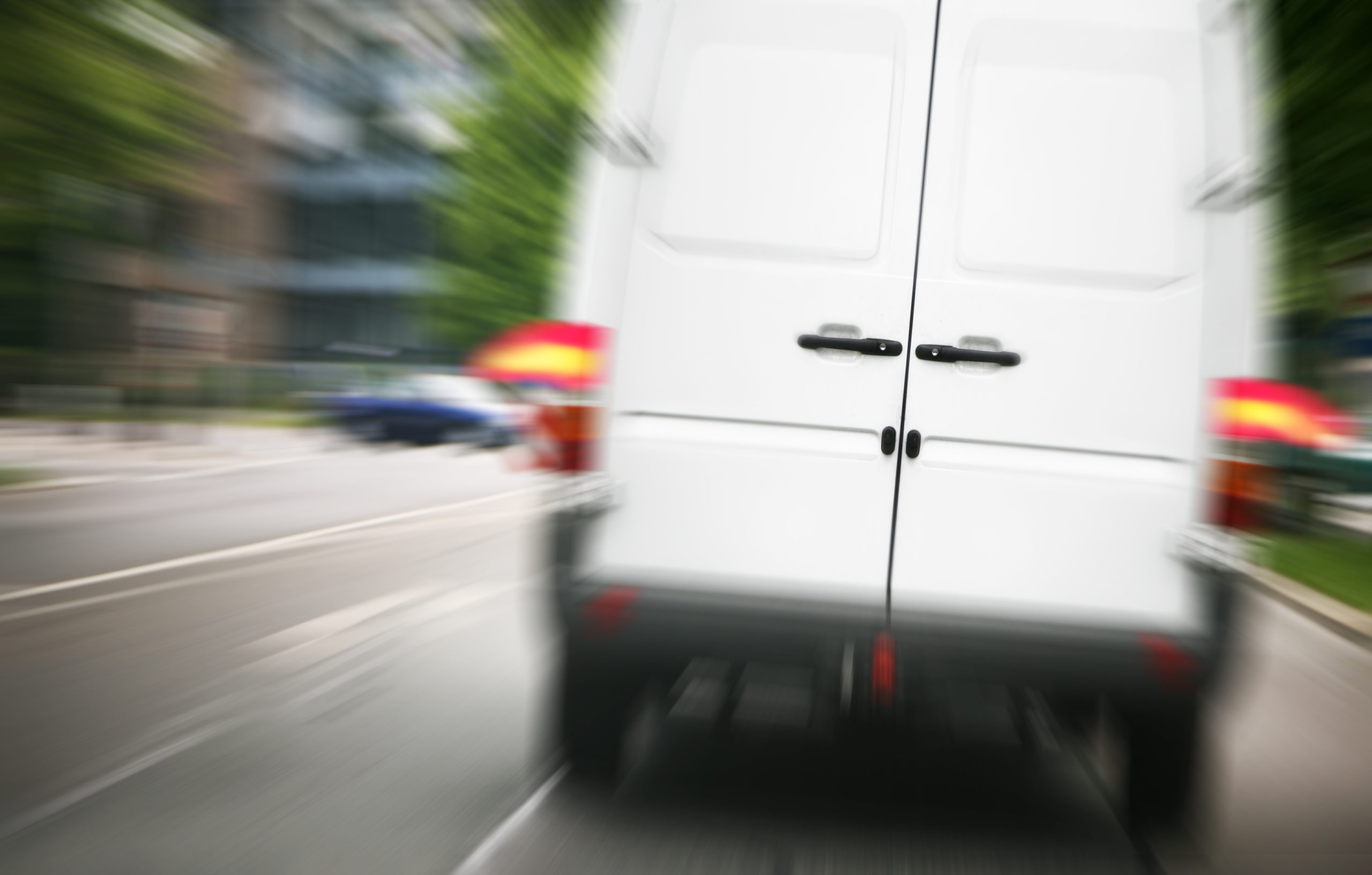
When driving on highways and interstates, large trucks pulling larger trailers are a common sight for drivers, and they serve an essential role in the nation and New Jersey’s economy. These vehicles delivered almost 12 billion tons of cargo in 2019 according to the American Trucking Association’s statistics for 2019, accounting for 72.5% of delivered domestic tonnage.
However, the benefits of being able to carry large loads across America’s roadways come with the negatives of more dangerous accidents. Such sizes make these vehicles a huge risk to other motorists who benefit from the societal growth that the trucks support. Unfortunately, even with safe driving habits on the part of motorists, accidents will inevitably occur as mistakes are made or negligence actions are taken.
The Federal Motor Carrier Safety Administration (FMCSA) reported roughly 107,000 crashes involving large trucks that caused injuries in 2018 nationwide, with a further 4,415 resulting in fatalities. Nearly 80 of those fatal accidents occurred in New Jersey, with 91 individuals losing their lives as a result. While the odds are unlikely that you will be involved in a truck accident, it is important to understand what types there are and what might lead to them.
Types of Truck Accidents
Obviously, no two accidents are ever exactly the same. However, similarities in circumstances and outcomes allows for categorization of the accidents, which enables an experienced attorney to know what to investigate further. The following 11 accidents are the key accidents that are likely to occur:
- Jackknife
Jackknifes occur when a large rig folds itself to form a roughly 90-degree angle between the truck and the trailer at the point of their connection. Because of momentum carrying the trailer forward, it is able to continue moving forward despite the traction of the cab attempting to make it stop. Usually, this is caused by the driver braking hard and turning, but other causes include equipment failure and adverse weather conditions.
Oftentimes, this motion will cause trailers to swing in the path of following or oncoming vehicles, resulting in drivers needing to brake quickly or swerve to avoid being hit. However, it is often too late to avoid a jackknifing trailer, resulting in tragic ends for drivers of smaller vehicles. According to the FMCSA, over 300 fatal tractor-trailer accidents involved jackknifing.
- Rollover
Based on the data provided by the FMCSA, rollovers accounted for 4,000 crashes resulting in injuries in 2018, with a further 186 resulting in fatalities. Rollovers are typically the result of a driver losing control of their tractor-trailer, and the end result is that both the truck and the cargo will suddenly tip onto their sides as their weight is pulled down by gravity, either crushing vehicles nearby or acting as a hazard that other drivers must avoid.
- Tire Blowout
As the name implies, these accidents involve one or more of a truck’s tires blowing out as they drive down a highway. This will often result in erratic motions of the vehicle, both as a natural result of the tires’ destruction and as a result of a driver overcorrecting in order to stop their vehicle.
- Wide Turns
Wide turns occur when trucks first steer left then right in order to make right turns on roadways. Usually, they are in the left lane in order to accomplish the maneuver, and motorists in the right lanes fail to yield to the truck as it makes the turn. This results in the smaller vehicles being hit by the truck or ramming into the side of the truck or trailer.
- Blind Spots
While mirrors enable truck drivers to see a great deal of what is behind their vehicle, there are still blind spots that exist which smaller vehicles can fall into. When this occurs, it leaves the smaller vehicles vulnerable to rear-ending the trailer if the trucker driver has to stop suddenly or to being driven over when the driver changes lane. This is why most tractor-trailers include signs and warnings informing other drivers of the blind spots that a driver might have, as otherwise, there is no way for the truck driver to prevent the accident as he cannot see the other drivers in their positions.
- Lost Loads
Truck drivers need to make sure that their freight is properly secured and loaded before setting out for their destination. Otherwise, they risk their cargo falling out of the trailer that they are pulling, becoming a dangerous hazard to drivers behind them as oftentimes, cargo will fall into their path. The FMCSA reported roughly 100 accidents resulting in serious injury as a result of cargo being lost or shifting in 2018, with 9 accidents resulting in fatalities.
- Head-on
These are fairly similar to head-on collisions of cars, but involving a car and a truck rather than two cars. Two vehicles approaching from opposite directions will, due to negligence, equipment malfunction, or human error, collide head-on with one another. However, how they differ is that the drivers of cars involved in these accidents are at a higher risk of serious and fatal injury, as their vehicles simply do not have the weight and size to protect occupants from such a large opposing force.
Of course, trucks can crash head-on as well, with similar results as two cars colliding. However, given the sizes involved, they produce a much more dangerous hazard for the vehicles around the trucks, who must now navigate truck cabs and their trailers, which might have been knocked wildly across the road due to the accident.
- Rear-end
Like head-on collisions, a rear-end accident with a truck is similar in concept to a rear-end accident with a car. In some cases, a car will slam into the back of a truck’s trailer. However, the difference lies in the fact that a car will typically hit into a much sturdier and difficult to move object, resulting in greater damage to the car. These can result due to a car driver tailgating a tractor-trailer or a truck driver braking suddenly without warning.
Of course, a truck can also rear-end a car. Similar to when a car rear-ends a truck, the car does not have the weight necessary to hold back the truck. This results in a higher likelihood of injury to the car’s driver and passengers. Again, this could be caused by a vehicle slipping into the blindspot of the truck driver, a vehicle braking suddenly in front of a truck driver, or a truck driver following too closely behind a smaller vehicle.
- Override
You might consider overrides a deadlier form of a truck rear-ending a car, though overrides can also occur when a truck hits a vehicle from the side or head-on. This term refers to a truck driving over a vehicle, crushing part of the vehicle and pushing it forward with its weight. This is incredibly dangerous to a car’s occupants, as they may simply be crushed by the weight of the truck.
- Underride
Again, you might consider underrides a deadlier form of a car rear-ending a truck or its trailer, but a car can also drive into the side of a trailer, the top of it being peeled off by the trailer while the rest continues to move forward.
- T-bone
T-bone accidents occur when one vehicle slams into the side of another, usually at an intersection when both are attempting to cross at the same time. These are incredibly dangerous to the drivers of a car, especially if it is the truck that t-bones the car. The risk of injury or death is only further increased if the striking vehicle is a semi-truck hauling a heavy load of cargo.

Causes of Truck Accidents
There can be a variety of reasons that truck accidents occur, creating a dilemma for car and truck drivers alike when determining who is at fault for an accident. The following list of conditions and actions can serve as a good starting point for determining what caused an accident and who is liable for the accident.
- Was either driver speeding when the accident occurred?
- Was either driver engaging in reckless and aggressive driving, such as tailgating?
- Was either driver distracted by something like a phone or a passenger speaking?
- Was either driver drowsy or under the influence of drugs or alcohol?
- Was either driver negligent in maintaining their vehicle?
- Did the truck company fail to verify the driver’s suitability to drive a truck?
- Was the truck driver experiencing fatigue due to driving their vehicle too long without a legally required break?
Any of these could result in the accidents described above, though usually, multiple acts of negligence and recklessness will culminate in a single accident. For example, Marvrikidis v. Petullo covered an accident in which the plaintiff was burned as a result of the truck driver running a red light and striking a telephone pole, causing his truck to turn over and its cargo of asphalt to spill on the plaintiff’s vehicle while also striking the smaller vehicle with the truck.
Upon further investigation, it was found that the driver and his father, who owned the business which owned the truck, were driving while suspended, and the father knowingly allowed his unlicensed son to drive the vehicle without proper insurance. Additionally, the truck was found to be both overweight for statutory limits and lacking a right rear brake, both signs of negligent maintenance on the part of Petullo and his father.
Liability was found for both the son, the father, the asphalt company which allowed them to deliver the asphalt despite being aware of the overweight truck, and the retail gasoline and auto repair shop, which had hired the son and father to deliver the asphalt despite being aware of their trucks’ terrible condition.
How Will I Receive Compensation?
Assuming a victim is covered by an auto insurance policy, whether their own, a family member’s, or the policy of the driver they were riding with, they will be able to receive PIP benefits which are required in all auto insurance policies. However, PIP benefits will only cover expenses for tangible economic losses such as medical expenses and loss of wages. They will not cover non-economic losses such as pain and suffering, which the victim will need to sue for.
If a victim wishes to sue an at-fault truck driver or company, they must satisfy the lawsuit threshold if they are covered by an auto policy which includes a limitation on lawsuit provision. This means that the victim must suffer some form of serious injury such as death, dismemberment, loss of a fetus, significant disfigurement, displaced fracture, or a permanent injury within a reasonable degree of medical probability. If they do suffer such an injury, they may sue possibly liable parties for compensation of their losses.
When suing in a New Jersey court, the victim agrees to allow the court to apply the modified comparative fault rule to their case. The court will hear the facts of the case, and assign liability based upon impartial standards to each person liable for the accident, including possibly the victim.
If the truck driver, their company, or another party is found liable for a victim’s injuries, then the court will order compensation by those parties, usually paid using liability insurance owned by the other parties. Multiple parties can be found at fault for the accident, as was the case in Marvikidis v. Petullo. However, such compensation will be reduced proportionally by the victim’s own liability.

Case Study: $3.9 Million
What makes this case unique: Competing arguments on whether the victim had experienced “impending doom”; a big-shot attorney who was “too large” for the case.
What Should I Do if I’ve Been Injured in a Truck Accident?
If you or a loved one has been injured in any type of truck accident, contact Rosenblum Law for a free, no-obligation consultation today. Our experienced personal injury attorneys can analyze the situation and negotiate the best possible settlement for you. Call 888-815-3649 or email us today.










 888-815-3649
888-815-3649
